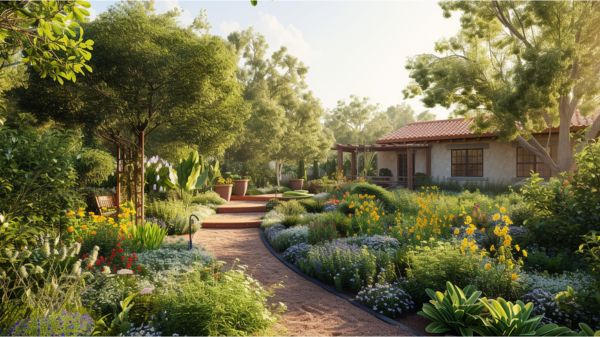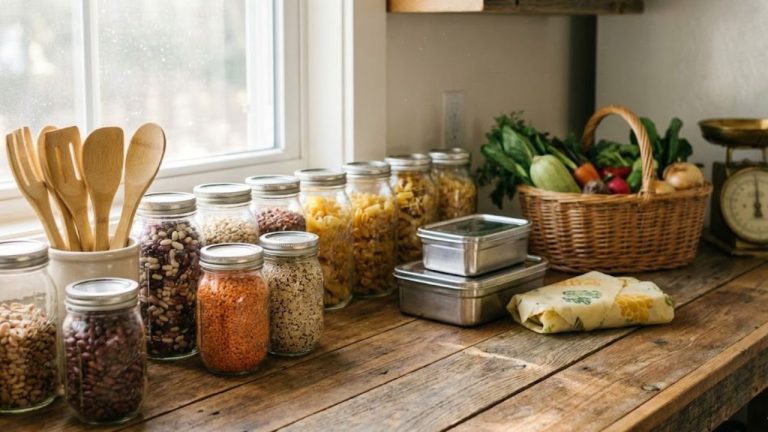Are you looking to make your home more environmentally friendly? We have seven effective water conservation tips for green homes that will help you reduce water waste and save valuable resources.
One example of these tips is fixing leaks in faucets, pipes, and toilets. By regularly checking for and repairing leaks, you can prevent unnecessary water wastage.
Our tips also include using efficient appliances, installing low-flow fixtures, and watering your yard wisely. We’ll show you how to be mindful in the shower, turn off faucets when not in use, and even recycle water for outdoor irrigation.
Join us in creating a greener future by implementing these simple and effective water conservation practices in your home!
Check for Leaks
We should regularly check for leaks in our homes to conserve water and prevent unnecessary wastage. Did you know that the average household loses 10,000 gallons of water to leaks every year? That’s a staggering amount of wasted water! By checking for leaks, we can reduce evaporation, save more water, and ultimately protect our precious water supply.
One simple way to find leaks is by monitoring our water meter before and after a period of no water usage. If the meter reading changes, it could indicate a leak. Additionally, smart water monitoring systems are now available that can detect and locate leaks in real time, making it even easier to identify and fix them promptly.
Repairing leaks not only saves water, but also prevents potential damage to our homes. By taking proactive measures to check for leaks, we can do our part in conserving water, reducing water pollution, and ensuring a sustainable water future for all.
Let’s be mindful of our water usage and make checking for leaks a regular habit in our homes.
Use Efficient Appliances
Let’s prioritize using water-efficient appliances in our green homes. By doing so, we can make a significant impact on our water usage and help save gallons of water every day. Here are three reasons why using efficient appliances is crucial:
- Washing machines: Adjusting load sizes for top-loading machines and waiting for a full load before running front-loading machines can save gallons of water per load.
- Dishwashers: Fully loading dishwashers before running them not only saves water but also reduces the energy used per load.
- Toilets: Consider replacing old toilets with water-efficient models that use less water per flush, ultimately saving gallons of water every day.
Turn off Faucets When Not in Use
One simple way to conserve water in our green homes is by turning off faucets when they aren’t in use. This is an effective water conservation tip that can help us save water and reduce our water usage.
By being conscious of leaving the faucet running unnecessarily, we can minimize water wastage and contribute to the conservation of our water resources. Every drop counts, and by turning off the faucet when we’re not actively using water, we can reduce our water footprint and help conserve water for future generations.
Water is a limited supply, and it’s important that we take steps to conserve it. So, let’s make it a habit to turn off faucets when not in use and play our part in conserving our precious water resources.
Install Low Flow Plumbing Fixtures
To achieve effective water conservation in our green homes, one of the essential steps is to install low flow plumbing fixtures. These fixtures, such as WaterSense showerheads and faucets, can significantly reduce water usage and save money on utility bills. Upgrading to low-flow or dual flush toilets is another great option, as it can help to reduce water consumption in the home.
By installing low flow plumbing fixtures, like aerators and showerheads, we can conserve water without sacrificing performance. In fact, WaterSense labeled fixtures can save a family of four over 27,000 gallons of water annually.
Water Yard Wisely
To conserve water in our green homes, we should consider how to water the yard wisely. One of the most effective ways to do this is by watering the lawn once or twice a week instead of daily. This helps to avoid water wastage and reduces the amount of water needed to keep our yards green and healthy.
Additionally, it’s important to water the yard in the morning or late evening to prevent evaporation and ensure that the water is used efficiently. By doing so, we can make sure that the plants and grass receive the necessary hydration without wasting precious water resources.
Another tip is to choose sustainable gardening practices and consider drought-resistant plants, as they require less water to thrive.
Lastly, using efficient irrigation systems like drip irrigation or soaker hoses can help to conserve water by delivering it directly to the roots and minimizing evaporation.
Conclusion
By implementing these seven effective water conservation tips for green homes, we can become stewards of our planet and champions of sustainable living.
Let’s fix leaks, choose efficient appliances, turn off faucets when not in use, install low-flow plumbing fixtures, and water our yards wisely.
Together, we can create a greener future where every drop of water counts and our homes become oases of conservation and harmony with nature.




